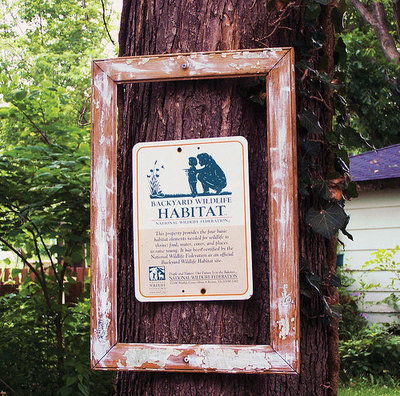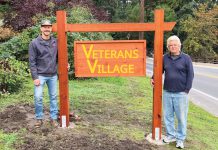
One of my resolutions this year is to get my garden certified as a wildlife habitat by the National Wildlife Federation.
It will be fun for me, but it would also be a good school project for children. They can keep track of all the birds, butterflies, dragonflies, insects, mammals, lizards and frogs that stop by to visit their yard.
Once your backyard is certified by the NWF, you can order and display an attractive Certified Wildlife Habitat sign to convey your commitment to wildlife conservation and the environment and help spread the word to your neighbors.
All species of wildlife need the basics of food, water, cover and places to raise young. We can help conserve our natural resources, like soil, water, air and habitat for native wildlife, by gardening in an environmentally friendly way.
Here are some of the simple steps I’m taking in my small garden to reach my goal:
• To provide food in my shady garden, I plan to include California native snowberry, pink flowering currant and mahonia for berries that attract birds. Hummingbirds will find nectar from coral bells, western columbine and fuchsia-flowering currants. I also keep my feeders up year-round for them.
Butterflies will like Santa Barbara daisy, sweet alyssum and columbine. Plants that will attract beneficial insects are California rose, coast live oak and ceanothus. Although I try to plant natives for their beauty and toughness, I believe finding the right balance by mixing natives with non-natives can enhance benefits to wildlife.
• Next, I provide clean water for drinking, bathing and reproduction. I don’t have room for a pond, but I do have bird baths that I keep filled year-round. I’m also planning to make a puddling area for butterflies.
• Wild creatures need places to find shelter from the weather and predators. I keep some areas of my garden orderly but leave some less manicured. I plant in layers, providing a canopy or tree layer, a shrub layer and a groundcover layer. This provides a large range of sheltering, feeding and nesting sites.
Keep in mind, wildlife need to feel safe in their surroundings. They tend to steer clear of large, open spaces. I find that most of the wildlife that visit my yard start at the wooded area in the back and work their way up through dense shrubs, wild berries, a dead tree and a small log pile.
Evergreens and deciduous trees provide nesting areas for birds. The rock wall and leaf pile are favorite spots for mice, snakes and salamanders to lay their eggs or raise young. Butterfly larvae find food on host ceanothus, huckleberry, oaks, bleeding hearts, foxglove, sweet alyssum, ornamental strawberry, dogwood, viburnum, crabapple and red flowering currant. I’d plant a wisteria for them if I had more sun.
• I conserve our valuable resources with simple measures like mulching, using drip and soaker hoses and planting low-water-use plants, like natives suited to this area. I also use organic fertilizers and use organic pesticides only when necessary.
In my little corner of the world, I’ve created a beautiful wildlife garden. Visit the National Wildlife Federation online at www.nwf.org to get started on your own certification.
• Jan Nelson, a California certified nursery professional at Plant Works in Ben Lomond, will answer questions about gardening in the Santa Cruz Mountains. E-mail her at ja******@*ol.com.












